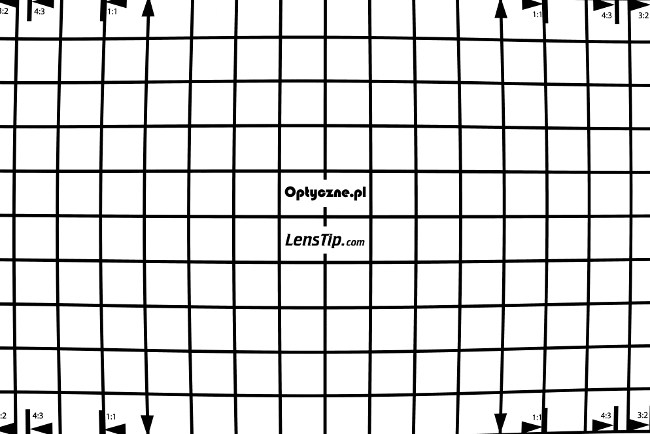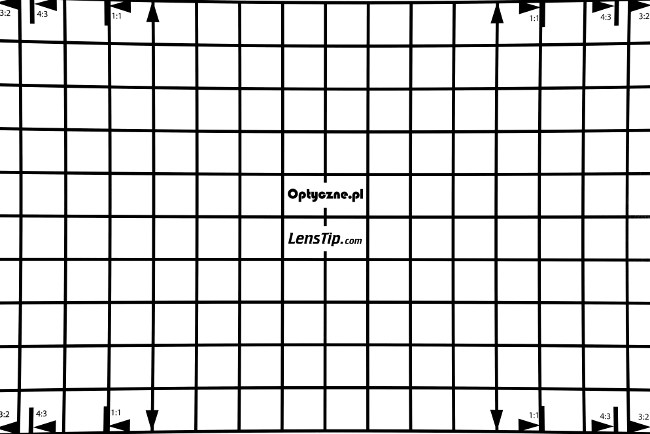Sony FE 24-70 mm f/2.8 GM II – first impressions
3. Autofocus and some remarks concerning optical properties
Still the photos prove you deal with pretty good sharpness across the whole focal range. In our opinion the new lens fares at least as good as its predecessor; taking into account the fact that it is significantly lighter and smaller you can only praise Sony for such an approach.
The Sony PZ FE 16-35 mm f/4, presented by us not so long ago, corrected distortion automatically and it was impossible to switch that option off in the camera menu. The Sony FE 24-70 mm f/2.8 GM II doesn't do that and it might suggest the constructor tried to correct distortion with optics. The photos, shown below, shot at two extremes of the focal range, seem to prove such a conclusion.
Please Support UsIf you enjoy our reviews and articles, and you want us to continue our work please, support our website by donating through PayPal. The funds are going to be used for paying our editorial team, renting servers, and equipping our testing studio; only that way we will be able to continue providing you interesting content for free. |
- - - - - - - - - - - - - - - - - - - - - - - - - - - - - - - - - - - - - - - - - - - - - - - -
| Sony A7R III, 24 mm, JPEG | |||
 |
|||
| Sony A7R III, 70 mm, JPEG | |||
 |
|||
In case of the widest angle of view distortion is not especially conspicuous; its value, averaged out across the frame, reaches near -2.9%. Still, it's clear such a result was reached with the help of moustache distortion. If you limit your measurements to the centre of the frame you get barrel deformations of -4%.
At 10 mm you see slight 'pincushion' which level we estimated as more or less +1.5%.
The performace in this category is still noticeably better than the performance of the Sigma A 24-70 mm f/2.8 DG DN which also featured moustache distortion but of higher values than those shown by the new Sony lens.
We were very curious how reducing physical dimensions of the lens with the increase of the number of elements might influence vignetting. Let's remind here that the predecessor of this instrument fared quite well for a zoom lens in this category, especially if you take its parameters into account. At a very difficult combination of f/2.8 aperture and the 24 mm focal lenght it lost just about 2.2 EV in frame corners and only 1.6 EV at the maximum focal length and maximum relative aperture.
Let's glance at thumbnails, shown below, in order to assess the performance of the new Sony journalistic zoom.
| A7R III, FF, 24 mm, f/2.8 | A7R III, FF, 70 mm, f/2.8 |

|

|
According to our expectations, the results are weaker. At the widest angle of view and by f/2.8 vignettig gets near 2.6 EV; by the same aperture fastness and the maximum focal length the result is about 1.9 EV. Of course these numbers are just estimates, precise values will be determined during the full test of the final specimen and such a product can differ from a pre-production model in e.g. coatings. Such details influence vignetting results so the final vignetting levels can be a tad different.
The autofocus of the Sony FE 24-70 mm f/2.8 GM II is based on four XD Linear Motors – it is supposed to ensure full functionality of the mechanism while cooperating with the Sony A1 in the serial 30 fps mode and ensuring focus tracking during the change of the focal length.
First, we checked the performance of the new lens joined with a bit older body, the Sony A7R III. The focusing mechanism was noiseless and very quick, so quick that it would be difficult to measure it. Running through the whole distance range and confirming the focus practically doesn't take longer than 0.2 of a second, a sensational result. The older version of the lens performed well in this category too, with the focusing time being about 0.3-0.4 of a second, but sometimes the mechanism wavered a bit around the right position. With the newer version we never experienced any any focus hunting effect – it went right to the proper point at once, without any hesitation.
If the lens fared so well when attached to the Sony A7R III we shouldn't be surprised by the fact that after attaching it to the flagship Sony A1 it performed even better. Once again we dealt with noiseless and very speedy focusing without any wavering. The sensitivity of the mechanism was so great that it coult detect every element inside the field of view. For example when I tried to focus on an object visible through a window, the mechanism was able to detect small imperfections and specks of dust on the window pane and focused on them even though they weren't perfectly contrasted. Mind you, we handled the pre-production specimen; the autofocus software of the final product might be additionally fine-tuned.






